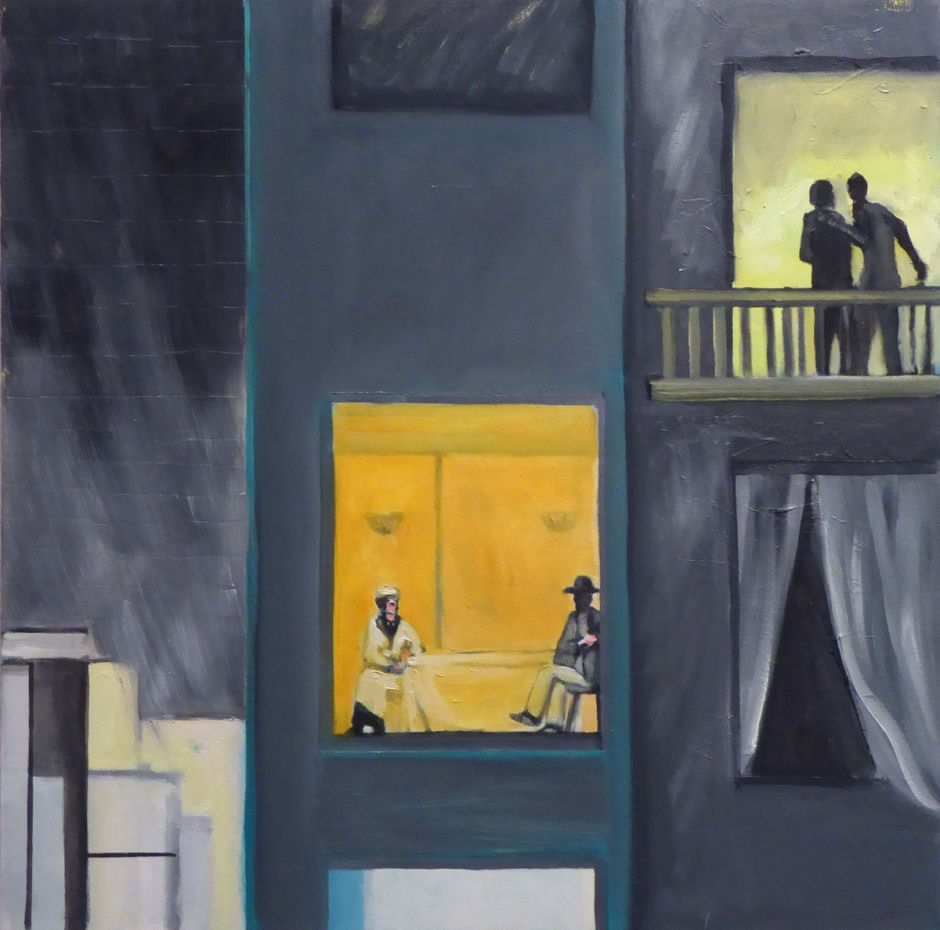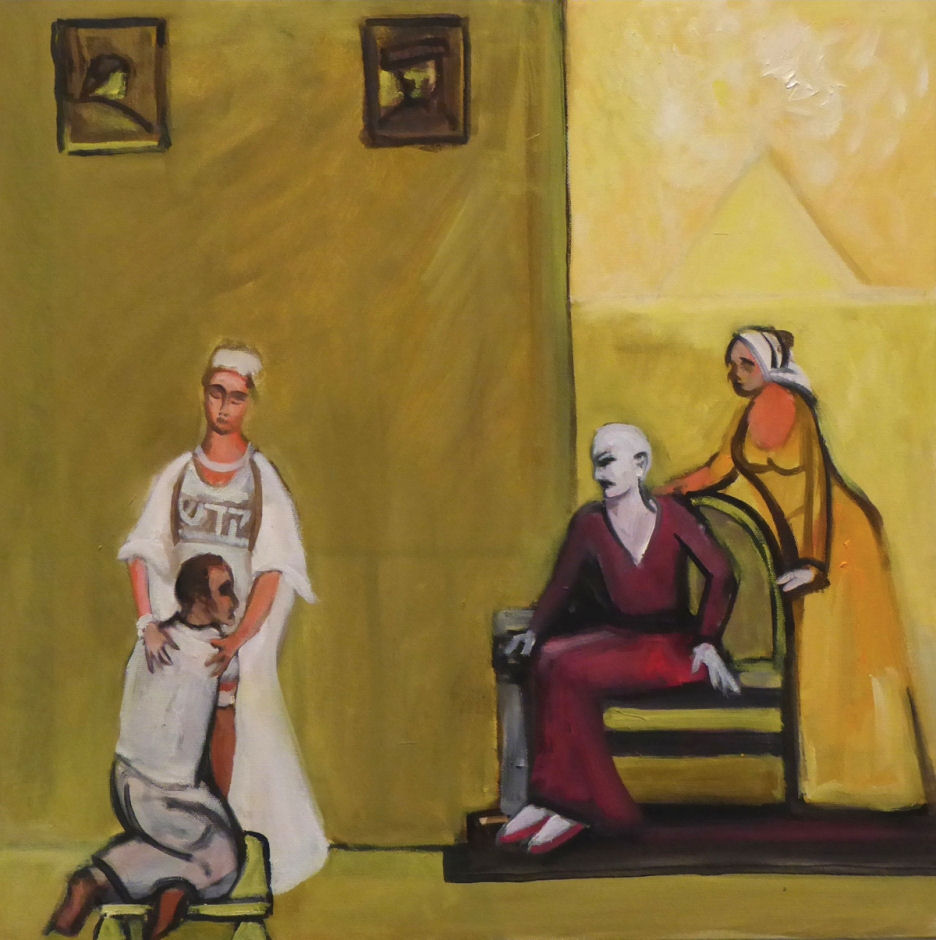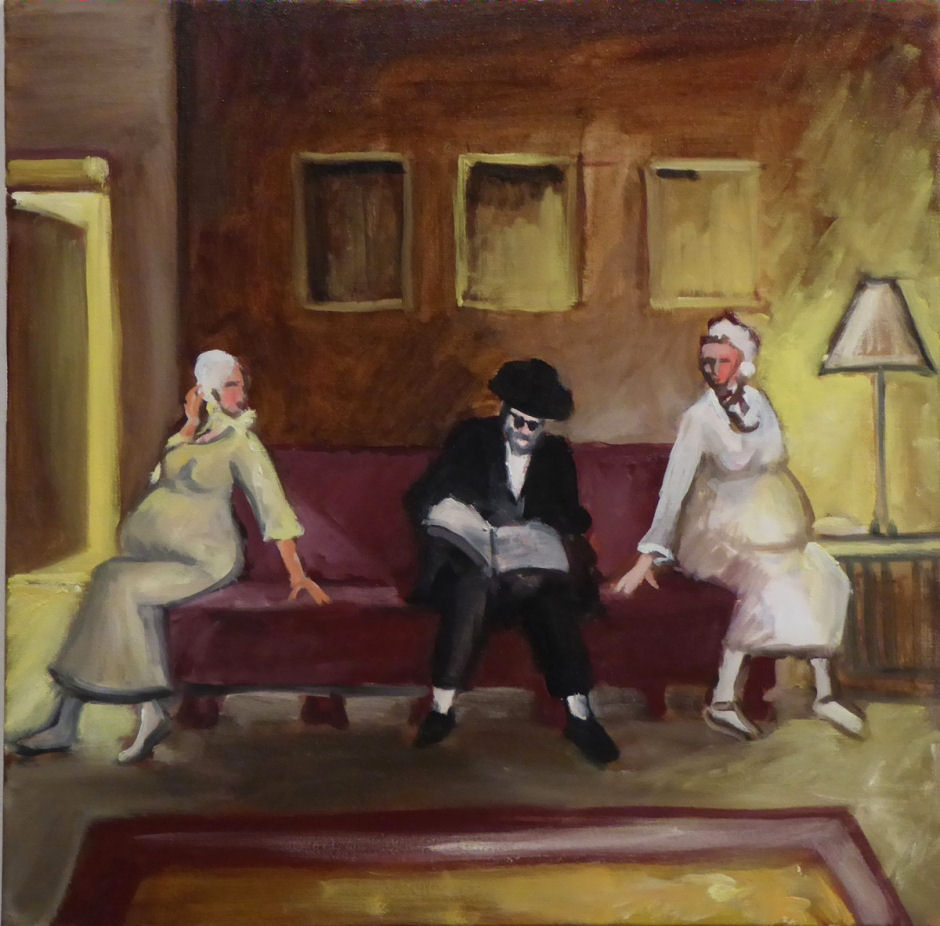
10 Apr Richard McBee: Relative Narratives
On view April 10–August 14, 2016
Click here to read the catalogue online
In Richard McBee: Relative Narratives, Richard McBee draws equally from what is read and what is seen. Discussions of Jewish art often set these dualities—text and vision—in opposition. Eschewing such tropes, McBee has a rich and deep knowledge of the Bible and rabbinic commentaries (midrash) and of the history of art. Together they are the wellspring of his art and enrich contemporary viewers’ understanding of the difficult stories he sometimes chooses to represent in his paintings.
Perhaps the only instance of Joseph’s wife, Asenath, in the history of art is her appearance in Rembrandt’s Jacob Blessing the Sons of Joseph, 1656 (Museumslandschafts Hessen, Kassel, Germany), according to McBee. The Sotah, a woman accused of adultery and subjected to a trial by ordeal under a long-abandoned Jewish law, has never before been represented visually as far as one can determine.

Richard McBee, Sotah’s Sin, from Sotah Series, 2009, oil on canvas, 24 x 24 in. Courtesy of the artist.
Sotah Series comprises four individually titled 24 x 24-inch canvases and The Story of Asenath eight panels of the same size, also with separate titles. In each grouping, the simply drawn figures act in spaces where the geometry echoes or complements the canvas shape, which is punctuated by other forms, such as the architectural triangles of pediments (Sotah) or pyramids (The Story of Asenath). Both series focus on women and, for the most part, take place in settings identifiable through simple visual clues that function as synecdoche relative to their larger narratives: an execution yard; a patriarch’s bedroom; a synagogue, or an apartment block. The series are narrative works; postmodern, they hark back to the way in which stories are told sequentially in the ancient wall paintings at the synagogue at Dura Europos or by Giotto at Padua. Yet, with their pastiches and visual quotations, they offer the familiar intermingling of present and past in Jewish history and tradition.

Richard McBee, Asenath Brings Joseph Home to Mr. and Mrs. Potiphar, from The Story of Asenath, 2014, oil on canvas, 24 x 24 in. Courtesy of the artist
About the Artist
Richard McBee was born in New York City. He studied painting at the Art Students League of New York. He has dealt exclusively with subject matter from the first five books of the Bible, rabbinic commentaries, and from Jewish history in figurative narratives since 1976. In 1991 he was one of the founding members of the American Guild of Judaic Art. Since 2008 he has been active as a curator in the Jewish Art Salon in New York City and most recently has organized Passover and the Consequences of Freedom at Brooklyn Jewish Art Gallery, a co-presentation with Jewish Art Salon.

Richard McBee, Leah and Rachel Pregnant, from The Story of Asenath, 2014, oil on canvas 24 x 24 in. Courtesy of the artist.
McBee has exhibited in the U.S. and Israel since the late 1970s. Most recently three of his paintings from a series on Hagar were included in a group exhibition organized by Jewish Art Salon, New York/New Work, at Mishkan Museum of Art, Ein Harod, Israel (2015-2016); the Jewish Art Salon Pavilion at the Jerusalem Biennale, Van Leer Institute, Jerusalem (2015), and in two exhibitions at the Museum at Hebrew Union College, New York, Evil: A Matter of Intent (2015-16) and The Sexuality Spectrum (2012-2013). He was also included in Terror: Artists Respond, Dershowitz Center Gallery at Industry City, Brooklyn (2011), and Dura Europos Project, Museum of Jewish Art in Philadelphia (2010-11).
From 2000 until 2014 he wrote a regular column in The Jewish Press surveying the Jewish arts scene and has also been published in The Forward and The Jewish Week. Lecturing throughout the country, his artwork is also in many private collections. Additional information on the artist, and his writings, may be found at http://www.richardmcbee.com.
![]() This exhibition is supported, in part, by public funds from the New York City Department of Cultural Affairs in partnership with the City Council.
This exhibition is supported, in part, by public funds from the New York City Department of Cultural Affairs in partnership with the City Council.

